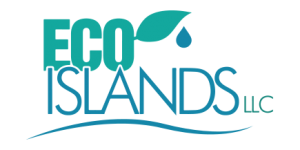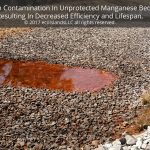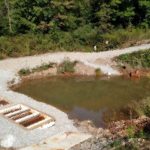#7: Desert Golden Algae, Nutrient and Silt Defense Project
Desert Golden Algae, Nutrient and Silt Defense Project
Hi All. I just sent this proposal off to Earl Conway, President and Conservation Director of the New Mexico B.A.S.S. Nation. They are “Dedicated to Conservation and the Bass Fishermen of New Mexico”. Earl’s big problem is golden algae (and here) which produces a toxin that wipes out everything with gills in the pond/lake. Earl is not alone. Terminal/low flow desert lakes, warm water, and agricultural nutrients lead to hyper-eutrophic conditions that can lead to golden algae blooms. Here is our solution.
PROJECT OVERVIEW
EcoIslands LLC proposes to install (1) PermaCycler Mk 307 (750 gallons) and (3) PermaCycler Mk 402’s (200 gallons each) as a demo at the Spring River Park and Zoo. Their pond is impacted by nutrient related Golden Algae blooms. The demo will determine the nutrient sequestration rates of PermCyclers with emphasis on phosphate removal as a limiting nutrient.
Further literature review has lead to the possibility that fungi, which grow in the Cycler’s lignin rich environment (coconut husk or hemp fiber), may produce a peroxidase (and here) that degrades the ichthyotoxins, fueled by the golden algae the fungi consumes.
An expandable, impermeable floating curtain will be used to cut off a test column of the pond/lake. One to two feet of open pond exists below the curtain so biota have a way in and out of the “sweet water” columnar haven.
The sweet water is generated by exchange between the test column and the PermaCyclers. The accumulated nutrient rich sediment/sludge in the PermaCyclers will be flushed to a decant holding tank or dewatering infiltration basin. Greatest efficiency is expected to be maintained at flow rates of 50-150 gallons per minute of exchange with sludge flushing every 2-4 weeks.
The aim is to have good project efficacy and scaling rates for $40-50,000.
This cost includes the PermaCyclers, transport, the pump, install, sampling and cleanouts for a set period of time by a local partner. Floats for the curtain and a flat spot on the shore to place the PermaCyclers are required.
An off grid solar kit can be developed for an additional $8,000 including all materials, fabrication, certified specs, transport and attachment to the PermaCyclers.
It is expected the kit will yield 1-2Kw and run the DC pump effectively, but only during the day. The kit does not include a battery backup in this embodiment, but certainly can. The kit, once fully fleshed out by EcoIslands LLC and GroundHog Solar LLC (our neighbors and project collaborators) will retail between $3-5,000 to run one or a dozen PermaCyclers or larger volume during the day and will ship inside the PermaCycler.
A number of kits can export their extra energy back to the grid or used for other treatment methods. You can do a lot with 10 kw’s of desert sunlight.
PROJECT GOALS
- Execute a safe and efficient installation taking no more than one working day.
- Increase ponds habitable zone during peak algae blooming seasons.
- De-silt the pond over the long term, removing benthic materials and settled nutrients, increasing volume, and reducing available phosphate and other nutrient salts leading to cyclical blooms.
- Purpose the sludge nutrients and silt for agriculture.
- Monitor and record lab and field data, manipulating experimental design and parameters such as photic/aphotic condition’s impact, flow, temperature, influent and effluent position, curtain containment volume and depth, water column stratification as haloclines (TDS), thermoclines or Red/Oxyclines, and seasonal climate to determine peak efficiency and long-term volume and clarification expectations.
Summation
If similar results are seen during this project as have been seen on our Mine Drainage and semi closed agriculture systems, we expect this experimental approach will prevent golden algae blooms. It will also increase the survivability of the lake in general through positive biotic and abiotic indicators, and provide valuable nutrients for local farming use.
The model we hope to develop will then be exported to other ponds and lakes to provide regional economic, ecological benefits that come from an increase in sweetwater, habitat, and jobs.





